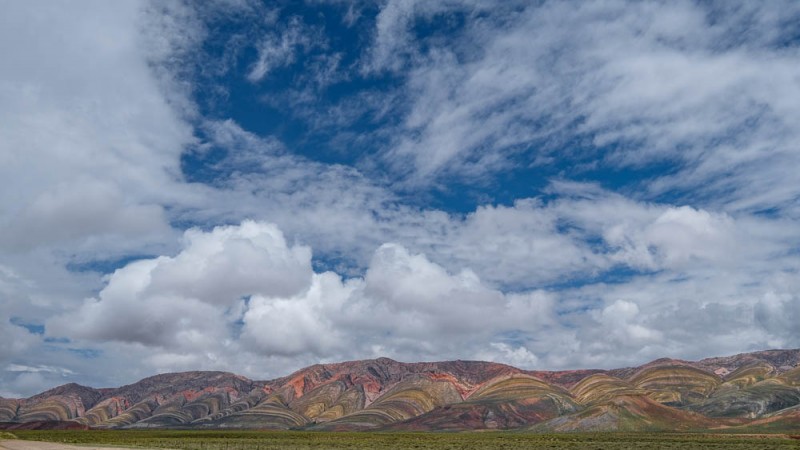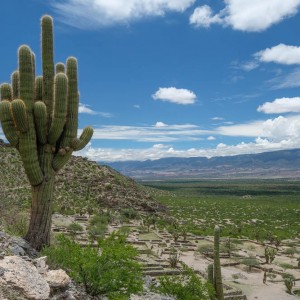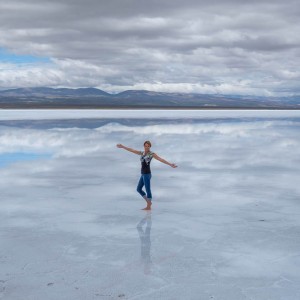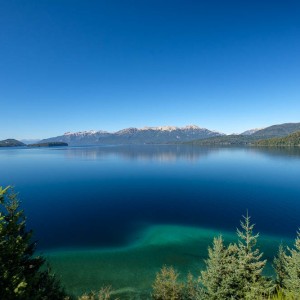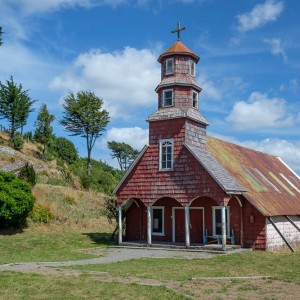We spent our first two weeks in Argentina in the Northwest. It was a short flight from Asuncion to Salta, so we were able to drive to Cafayate on the same day, or Cafazhate as they say in Argentina, because they do not do the ‘y’ sound here. On the way to Cafayate we already got a taste of the beautiful quebrada’s or canyons / gorges, for which the area is known. Beautiful colored rock walls, often folded, pushed up and cracked in crazy ways. I always find it fascinating to see that the earth is not just one big, boring clump of rock, but almost seems like a living thing.
In Cafayate we slept in a winery with a hotel in the yard – or vice versa, of course. Beautiful hotel, beautiful surroundings, and as Erwin wrote: with excellent food and drinks. Happy days!
Quebradas
From Cafayate we drove to Cachí, a much smaller town but also a bit less touristy, a few hundred kilometers further north. On the way there we passed another beautiful quebrada (de las flechas). An important reason to visit this place is the Parque Nacional de los Cordones: these are gigantic cacti with the classic cactus shape you find in comic books, that can be up to 10 meters high. Very nice. On your way to the park you will pass a good marketing stunt: the Recta Tintin. That is just a piece of straight road that some might find just boring, but by giving it a sexy name, the Argentinians have managed to turn it into a tourist attraction. Well done.
The next day we planned to drive even further north to the town of San Antonio de los Cobres. We started out enthusiastically on the unpaved Ruta 40, but after 2 hours on this road a car stopped from the other direction, to let us know that the road was impassable because of the high water level in the river. At home that would not be a problem, but here it was, because they don’t really do bridges in this region. Bridges are for wimps, of course. We had to turn back and come up with a plan B on the way: continue to Salta and spend the night there, and then drive from Salta to our Purmamarca destination via the highway. The road to Salta took us along a beautiful but foggy pass. On our way we booked a hotel in Salta that was probably a lot more comfortable than the original accommodation in San Antonio …
Purmamarca is known for the beautiful colored rocks of the ‘cerro de siete colores’. Other than that, it is a small and rather ugly village. We arrived there after a comfortable drive on the highway from Salta with a lunch stop in Jujuy. In the late afternoon light we took a beautiful walk around the hill, which itself is best visited in the morning because at that time of day it catches the sunlight. The village was quite busy, because it hosts a popular ‘artesanias’ market on its main square. Artesanias are handmade, unnecessary junk for tourists, we would say. However, you could also take a picture with a baby llama at the market and although we are generally opposed to animals being used for entertainment, the animal did not look unhappy or unhealthy and it was far too cute to pass without taking a selfie with it.
The next day we visited the salt flats that we had wanted to pass on our way to San Antonio de los Cobres. It is clearly no Uyuni, but it is always nice to stand on this type of ice field made of salt. Especially when there’s a clear sky and a layer of water on the salt, the reflections are beautiful. The road there was also a lot of fun, with about 6000 turns and bends through the mountains – but nicely paved!Our next stop was Tilcara, some 30 kilometers north of Purmamarca. Our real goal was the quebrada of Humahuaca which stretches even further to the north, but farther north the accommodation options were too limited. Tilcara is slightly larger than Purmamarca and quite a nice little town, with a number of reasonable restaurants. Among them is the restaurant Nueva Progreso, where we ate a delicious piece of llama meat and received the best-looking bill ever (it had drawings of our order).
Our visit to the quebrada the next day was a little more exciting than we bargained for. We first drove to Tres Cruces, about 100 km to the north, because there is a kilometers-wide piece of fantastically beautiful colored mountains there. Other than that, there is absolutely no reason to visit the town, we discovered during a walk. During that walk we were harassed by a group of five dogs, the biggest and meanest of which bit Erwin in his ankle! The wound was bleeding, and because of the pain and fright we were both a bit upset. In the end we did not go to a doctor’s office and we drove back to the village of Humahuaca. Very cozy, with a heartwarmingly ugly monument at the top of a tall set of steps. Over a very nice lunch we managed to recover a bit. Later that afternoon we drove to the Mirador of Humahuaca, to look at even more colored mountains at an altitude of 4300 meters. Spectacularly beautiful and a lovely drive, but a quite challenging walk at that altitude. Especially when we had to climb 50 meters or so to get back from the viewing point to the carpark, we needed some breaks.
These two fairly busy travel weeks, were followed by a somewhat quieter week in Salta, so we could ‘rest’ and I could get some work done. Our Airbnb apartment was nice and light, comfortable, and only 6 blocks or so away from the main square. Salta is not a very exciting city, but it is quite pleasant thanks to the climate and its environment. They have a cable car (not very exciting, and very hot the day we went) and you can take trips to nice places in the area such as San Lorenzo (very cold the day we went, walking area inaccessible due to high water level in the river and taxi back nowhere to be found). Salta’s small museum of high altitude archeology was interesting, mainly because of the mummies of Inca children it displayed. Apparently, the Incas were in the habit of sacrificing children on the highest mountain peaks, their most sacred places. Ten years earlier we had also seen such a mummy and although they are fascinating, I also find it sad to see them on display. So mixed feelings.
Around Bariloche
After Salta it was time for something completely different, namely: the lake area around Bariloche. First destination in that region: Villa La Angostura. According to our travel guide that is ‘a quieter alternative for the busy town of Bariloche’. Right… we found it to be a mixture of Venice and Eurodisney on summer Sunday afternoon, albeit with a German touch. We had not seen crowds this big since New Year’s Eve at the Copacabana! Luckily the environment made up for our initial dread: we drove part of the famous ‘seven lakes tour’ to San Martin des Andes. The water in those lakes is so crystal clear and under a sunny sky they look so beautifully blue that you immediately feel like jumping in. Until you dip your feet in the water that is, which is freezing cold (of course, meltwater, duh!). So we did not go swimming, but we did enjoy the lakes very much
Compared to Villa La Angostura, the crowds in Bariloche weren’t bad at all. Bariloche is a ski resort in winter and there are many ski lifts and cable cars, so we had to try at least one of them. There was a very strong wind on the day we took the cable car to Cerro Otto, so we did spend a lot of time up on the mountain. Shortly after we had descended, the cable car was shut down for the day due to the strong wind. One of the sights in the area is the ‘Swiss’ village of Colonia Suiza, which is called that way because Swiss immigrants once settled down there. To us it looks kind of fake and more like a tourist trap with all the hippies selling stuff, but it was kind of cute and a nice place to have lunch outside. Our trip to El Bolsón, a good 100 kilometers to the south, was a little disappointing. Nice trip, but nothing spectacular. The high mountains we expected to see were nowhere to be seen. They ended up being 7000 feet high, instead of 7000 meters. Oops.
Chile
The high mountains were not visible on our crossing to Chile, either. The only reason we spent a week in Chile was because we wanted to make this trip: crossing the Andes with boat rides on three different lakes, alternated by bus trips. The day started sunny but soon it became rainy and foggy, so we did not see any of the volcanoes on the Chilean side (which are around 6000 meters high).
Fortunately, in the following days, we saw plenty of volcanoes, because the weather rapidly cleared. Our first Airbnb was a beautiful cabaña just outside of Puerto Varas, with a view of the Llanquihue lake, and a number of volcanoes including the Osorno across the lake, and the Calbuco a bit further south.
While we were staying in Puerto Varas, Erwin celebrated a significant birthday (his 34th). That morning, we visited the neighboring village of Frutillas, where we had lunch in the sun. We did not want to drive for too long that day and did not know what to do until we finally read something about an animal shelter for local fauna: Senda Romahue. When we got there, we found that you can normally only go there if you have a reservation because all their activities are guided. We were able to join another group and it was pretty good fun. The shelter itself was not very special, with parakeets, pudus (the world’s smallest deer), foxes and a few pumas, but the guide was a very enthusiastic young lady who was clearly passionate about the environment and the shelter, and that made our visit. We planned to take a Uber in the evening to one of the better restaurants in the city, but unfortunately that did not happen. There aren’t very many Uber drivers in Puerto Varas and the one we booked gave up after twenty minutes: the app had sent him along a private road and the gate was closed … (we were given a remote control by our Airbnb host to operate the gate, but that obviously did not help our Uber driver, and apparently he did not want to take the necessary detour pick us up). In the end, Erwin drove himself to and from his birthday dinner on his 34th birthday, poor boy.
After a few days in Puerto Varas, it was time for a change of scenery, so we drove and sailed to Chiloe island. Chiloe is known for its colorful stilt houses (palafitos), and for its wooden churches, 16 of which have been named World Heritage sites by Unesco. The churches were established in the 17th century by the Jesuits and then taken over by the Franciscans in the 18th and 19th centuries, and they look very cute. On Chiloé, near the town of Castro, we had another beautiful cabaña with a view of the water. In this case it was a sea view, where the water was only visible at high tide, so half of the time we had a view of a lot of mud (according to Erwin we always had a seaview, only the water was a bit further away at some times. His glass is always half full.). Oh well. Unfortunately, our enjoyment of the place was somewhat disrupted by two little dogs who wanted nothing more than to put their muddy feet on us and our garden furniture. They looked very cute, but we did not fall for their charms.On our last day in Chile we had to get up early to arrive at the airport of Puerto Montt around noon. From there we flew via Santiago to Mendoza to attend the wine festival there, together with Erwin’s mother and her husband!
